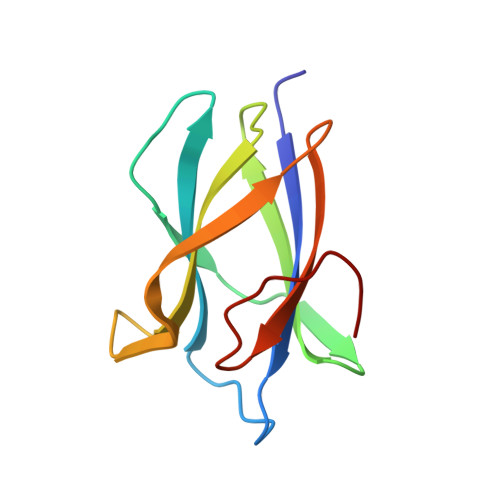The Structural Basis of Alpha-Glucan Recognition by a Family 41 Carbohydrate-Binding Module from Thermotoga Maritima
Lammerts Van Bueren, A., Boraston, A.B.(2007) J Mol Biol 365: 555
- PubMed: 17095014
- DOI: https://doi.org/10.1016/j.jmb.2006.10.018
- Primary Citation of Related Structures:
2J71, 2J72, 2J73 - PubMed Abstract:
Starch recognition by carbohydrate-binding modules (CBMs) is important for the activity of starch-degrading enzymes. The N-terminal family 41 CBM, TmCBM41 (from pullulanase PulA secreted by Thermotoga maritima) was shown to have alpha-glucan binding activity with specificity for alpha-1,4-glucans but was able to tolerate the alpha-1,6-linkages found roughly every three or four glucose units in pullulan. Using X-ray crystallography, the structures were solved for TmCBM41 in an uncomplexed form and in complex with maltotetraose and 6(3)-alpha-D-glucosyl-maltotriose (GM3). Ligand binding was facilitated by stacking interactions between the alpha-faces of the glucose residues and two tryptophan side-chains in the two main subsites of the carbohydrate-binding site. Overall, this mode of starch binding is quite well conserved by other starch-binding modules. The structure in complex with GM3 revealed a third binding subsite with the flexibility to accommodate an alpha-1,4- or an alpha-1,6-linked glucose.
Organizational Affiliation:
Biochemistry and Microbiology, University of Victoria, PO Box 3055 STN CSC, Victoria, BC, Canada V8W 3P6.

















